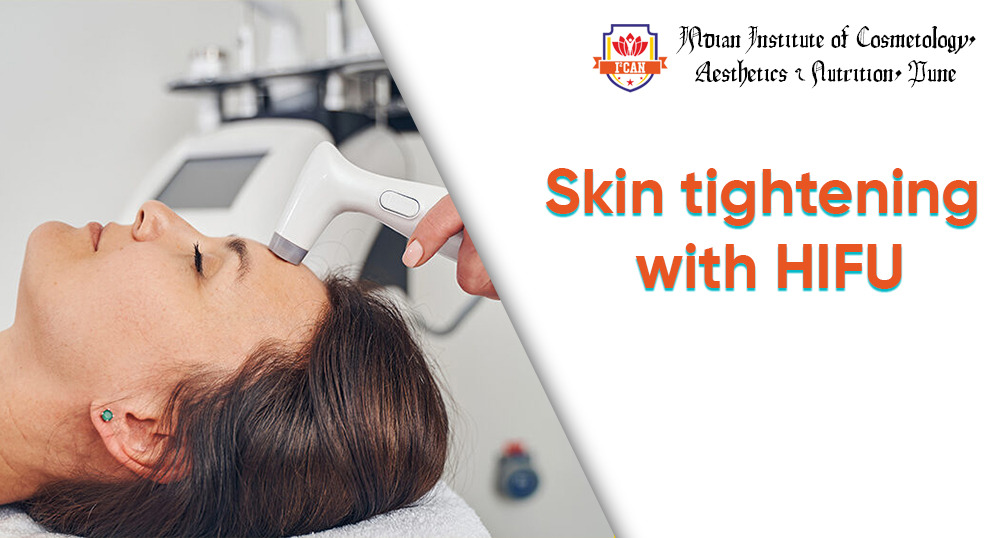The first and most visible difference is that they heat the deep skin tissues using distinct methods. HIFU uses fractional ultrasonic energy that is more accurate and intense, whereas RF uses a bulk heating method.
Second, every technique acts in various skin layers that partially overlap. HIFU can reach the SMAS layer, which is much deeper into and beyond the dermis. RF, on the other hand, isn’t as effective as HIFU. It is limited to the epidermal layers and does not reach the deep dermis.
What is the difference between RF and HIFU?
It’s a non-surgical, non-invasive procedure that tightens and tones the skin on your face and body using ultrasound technology.
HIFU treatment uses strongly directed ultrasound waves, which are different from the moderate wave of ultrasound energy that doctors use to examine unborn babies.
What is HIFU skin tightening and how does it work?
The gadget emits highly concentrated sonic radiation that penetrates deep into the skin and causes very precise thermal coagulation of the SMAS layer. It heats up a specified spot in a short amount of time by delivering tiny deposits of focused ultrasound energy. Your skin responds to this energy by encouraging the production of new compact collagen fibres in its deep dermal tissue. As a result, your skin’s elasticity and firmness will gradually tighten and improve.
HIFU skin tightening desired outcomes
The skin tightens instantly after treatment, and it continues to tighten slowly over time. This indicates that the healing process can begin with just one session, but full benefits will take 2-3 months to appear.
Skin tightening with radiofrequency (RF)
The devices that use radiofrequency radiation to convert the energy from radio to heat are used in RF skin tightening. The energy generated in this manner heats the skin’s deeper levels, stimulating collagen rebuilding. The radio frequency utilized in those gadgets is not the same as that used by your microwaves, smartphone, or radio.
What role does radiofrequency play in skin tightening?
RF is a beam that uses intense heat to treat the dermal, or middle layer of the skin. It only enters 3mm into skin tissue, warming it selectively to generate two kinds of reactions. However, the heat has less impact for deeper penetration, therefore this treatment has its limitations. The waves convey heat and energy deep into the skin, which helps the lymphatic and circulatory systems by enhancing the flow of fluid through the cells. Warming this area promotes minute changes in the tissues and collagen expansion without affecting the outer layers of the skin. This increases collagen formation in the months that follow.
HIFU vs. RF
Although they have the same goal, these two strategies are very different, and whether you choose one or the other will be determined by the results you wish to attain. We’ve outlined the key differences to assist you to understand the process and selecting the treatment that best meets your needs.
The main distinctions
?
Wrinkling, sagging, and drooping of the face occur as we grow older. While every individual’s ageing manner is different and should be addressed as just that, the following information illustrates how alternative therapies may be more appropriate for various difficulties.
If your primary concern is sagging and your final goal is an “uplifting” effect, HIFU may be a better option. The deeper the tissue tightening, the more noticeable the outcomes will be. As a result, HIFU will be the most effective method for tightening loose skin around the jowls, reducing the appearance of a double chin, and “lifting” the brows.
Because RF is a less intensive approach that does not enter tissues as deeply as HIFU, it may be a better option for treating volume loss or delicate areas like the lower and upper eyelids. If you have no or limited skin laxity but are losing face volume, the RF may be a good option for you.
HIFU and RF both increase collagen synthesis and speed up the rebuilding of skin tissues. As a result, they’re equally good at reducing fine lines and wrinkles. The ideal way to cure the indicators of skin degeneration will thus be determined by the level of your skin’s ageing and the area you want to treat.

